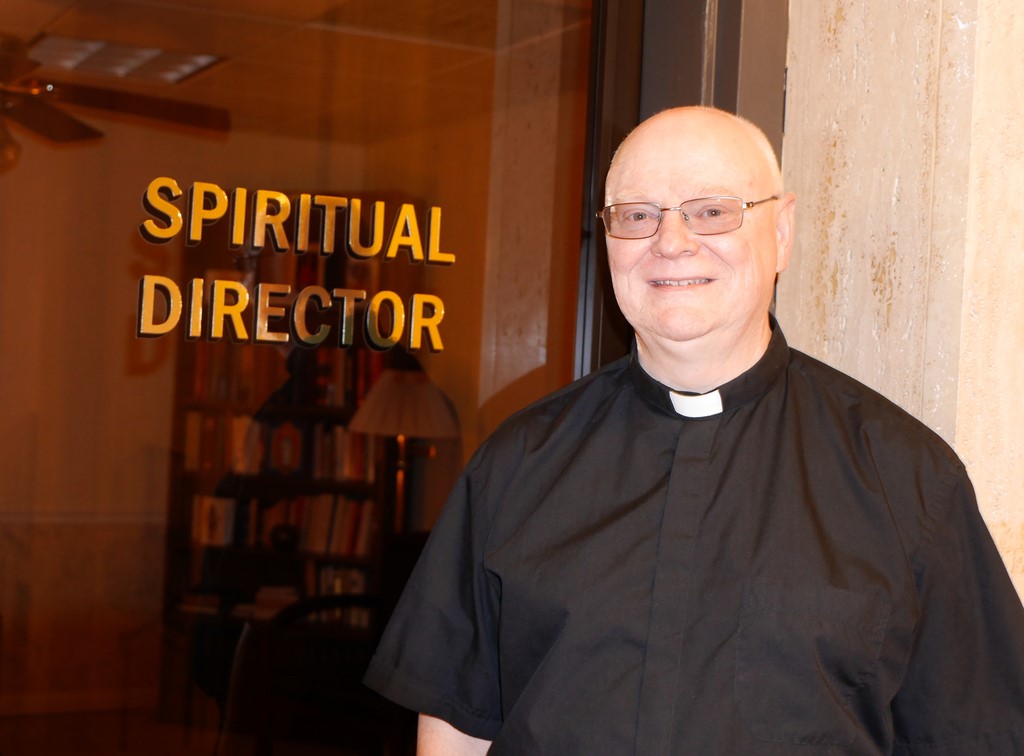|
" The Oneness Of Humanity"
“I know who God is. He is a father and a mother, who is happiest when he has His child, Jesus, upon His knee, and resting upon His heart, the Holy Spirit.” This is how St Therese of Lisieux once shared her humble concept of the Holy Trinity. Music is a fundamental and essentially mystical part of our existence, so for a major paper at seminary, I attempted to explain in music-science terms the mystery of the ‘Trinity’. For example, it takes ‘three’ strings behind a piano key vibrating together to produce just ‘one’ unified note. Also, it takes ‘air’, a ‘vocal cord’, and ‘mind’ to create ‘one’ sung or spoken sound. It was well received, but failed to fully convince many, since some keys need only ‘one’ or ‘two’ strings to make ‘one’ diatonic note. Perhaps this is why the idea of the Trinity – ‘three persons in one’ – was not easily accepted by the early church. In fact, it became a rigorous, hotly contested debate in the 4th C all across the known world when Emperor Constantine tried to formalize his newly adopted state religion, Christianity, for unifying his people. Heads of state and church assembled in ‘councils’ to tackle this issue, a key objective to write a universal Creed as in the Nicaean Creed from the ‘First Council of Nicaea’ in 325. However, even after the ‘First Council of Constantinople’ in 381, the international debate re the Trinity, including the contrasting views on the humanity vs divinity of Jesus, did not rest for decades among several Christian sects, notably the Arianists, Docetists, Donatists, Gnostics, Marcionites, and Montanists. The topic was also debated in the marketplace, workplace, public office and home. It was as much the topic of concern then as concerns re global warming and climate change are today. So, how did it end? In truth, it was never formally resolved, but also there was never a formal schism or separation between these sects. The promoters of the Trinitarian understanding of God simply gained prominence over time with the help of good theology (a study of the faith rapidly developing) and spiritual commentary. So, how is the Trinity now understood and expressed in our Roman Catholic faith? When the Church refers to the ‘Trinity’ (a word which comes from two Latin words, ‘trinitas’ meaning “triad” and ‘trinus’ which means “threefold”; also the combination of ‘tri’ meaning “three” and ‘unity’ meaning “one”) it is proclaiming that God is one God, but three ‘coeternal’ and ‘consubstantial’ persons: the Father, the Son (Jesus Christ), and the Holy Spirit. The three persons are understood to be ‘distinct’, yet are of one “substance, essence, or nature" which is called “homoousios”. “Nature" is what one is, whereas a “person” is who one is. So, does this bring us closure? If not, you are not alone. Even today’s scholars are still grappling with this mystery. But isn’t that the point? It is a ‘mystery’! Our minds are far too limited to comprehend or equal the mind of God. Rather, let us focus on what is more important, that, like the Trinity, we are one with them, with the Trinity, love being the cement binding us together as one. In Jn 17.20-23, Jesus asks the Father, “I ask not only on behalf of these, but also on behalf of those who will believe in me through their word, that they may all be one. As you, Father, are in me and I am in you, may they also be in us, so that the world may believe that you have sent me. The glory that you have given me I have given them, so that they may be one, as we are one, I in them and you in me, that they may become completely one, so that the world may know that you have sent me and have loved them even as you have loved me.” The legendary British poet, scholar, soldier, and cleric, ‘John Donne’, one of the greatest authors of spiritual and mystical writing of all time, acknowledged Christ’s call to his Father for all humanity and creation to become ‘one’ with the following words, later set to music by composer ‘Sir William Harris’ (1883-1973): “Bring us, O Lord God, at our last awakening, into the house and gate of heaven: to enter into that gate, and dwell in that house, where there shall be no darkness nor dazzling, but one equal light; no noise nor silence, but one equal music; no fears nor hopes, but one equal possession of spirit; no ends nor beginnings, but one equal eternity; in the habitation of thy glory and dominion, world without end. Amen.” And so, altogether in our ‘oneness’ with God and each other, let us give praise to the God the Father, and to God the Son, and to God the Holy Spirit. Amen. – Rev Fr Christopher Tracey, Saint Joseph Parish, Saugeen Shores, Ontario
0 Comments
Your comment will be posted after it is approved.
Leave a Reply. |
Father's Blog
Rev. Fr. Christopher Tracey
St. Joseph Parish Pastor Archives
January 2022
|
